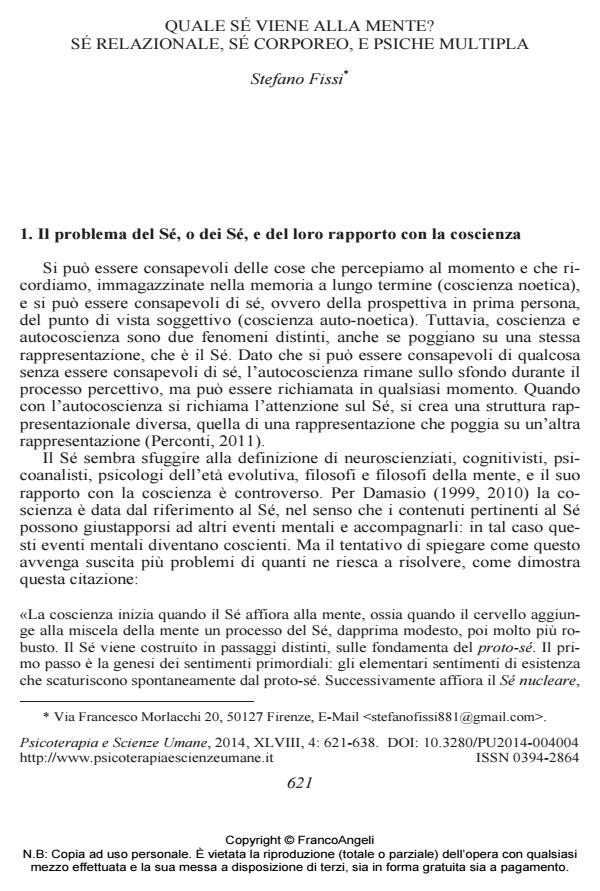Which self comes to mind? Bodily self, relational self, and manifold mind
Journal title PSICOTERAPIA E SCIENZE UMANE
Author/s Stefano Fissi
Publishing Year 2014 Issue 2014/4
Language Italian Pages 18 P. 621-638 File size 72 KB
DOI 10.3280/PU2014-004004
DOI is like a bar code for intellectual property: to have more infomation
click here
Below, you can see the article first page
If you want to buy this article in PDF format, you can do it, following the instructions to buy download credits

FrancoAngeli is member of Publishers International Linking Association, Inc (PILA), a not-for-profit association which run the CrossRef service enabling links to and from online scholarly content.
Consciousness relies on the self, but there are many kinds of self: a subjective or bodily self, an objective and relational self, and others selves which arrange themselves during the development. The subjective or bodily self refers to the mesencephalic core of self-representation which is the reference point for conscious experience, and one of the emotional operating systems. The objective and relational self refers to one side of the dyadic interactive representations of the infant-caregiver relationship, namely of the wiring of homeostatic hetero-regulation and selfregulation. Consciousness is a property of the web of brain circuitry operating in parallel and strictly connected, and is produced by a dynamic core of recursive loops representing a scene within its context. Manifold selves fit in a such a model and in the psychopathology of dissociative disorders.
Keywords: Self, consciousness, neurosciences, manifold, dissociation
- Recenti teorie della coscienza e modelli psicoanalitici Stefano Fissi, in PSICOTERAPIA E SCIENZE UMANE 2/2016 pp.253
DOI: 10.3280/PU2016-002005
Stefano Fissi, Quale sé viene alla mente? Sé relazionale, sé corporeo, e psiche multipla in "PSICOTERAPIA E SCIENZE UMANE" 4/2014, pp 621-638, DOI: 10.3280/PU2014-004004